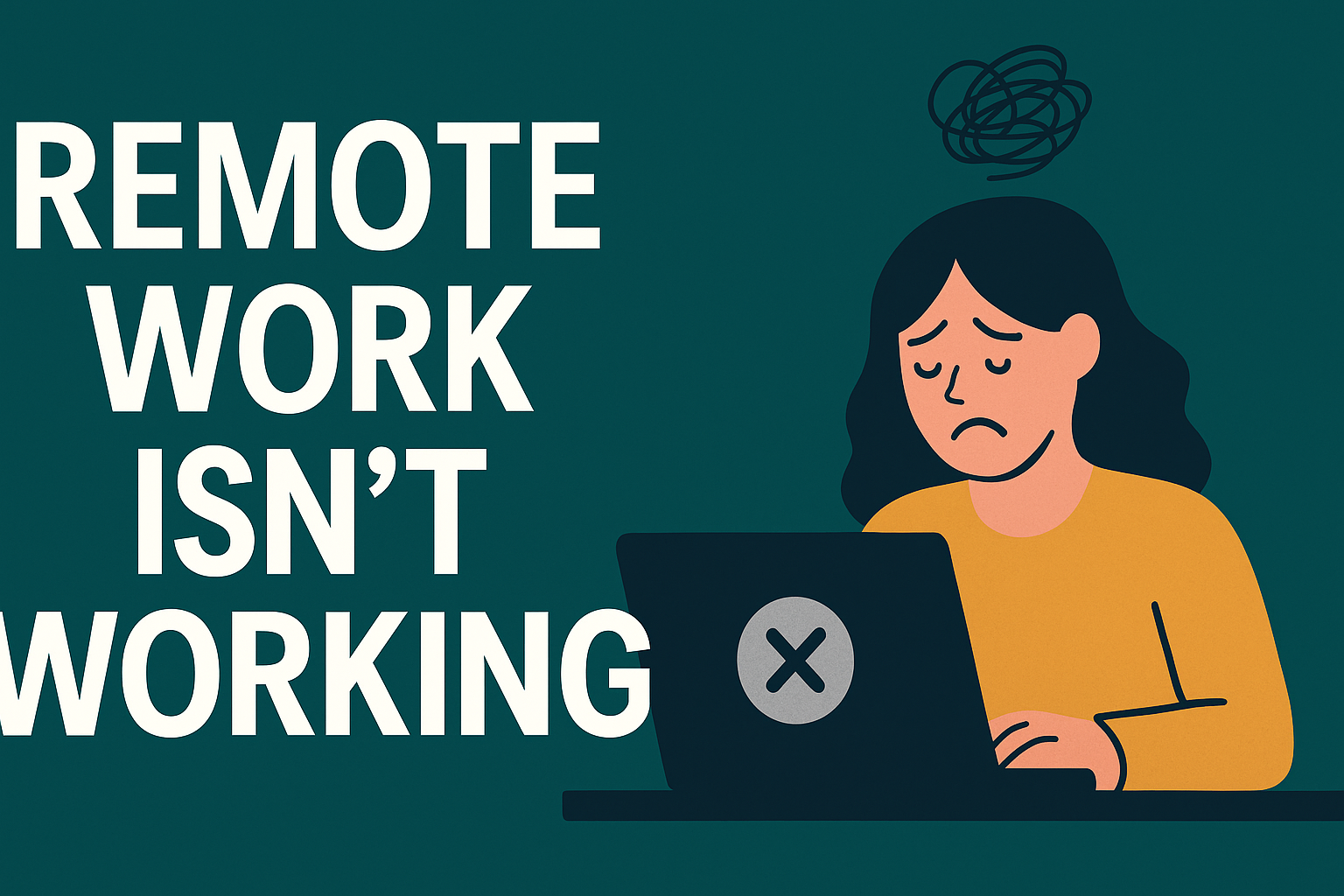

Summary
Most employees love remote work. But the data is clear: professionals "working" at home put in 6 hours less than peers in the office. That gap is breaking businesses.

Table of contents
Employers Are Right: Remote Work Isn’t Working
Remote work is loved by most — but mistrusted by many
Most employees love remote work — the flexibility, the chance to skip wasted hours in traffic, and the freedom to shape their day a little more on their own terms. Surveys consistently show it as a top perk.
However, many executives and managers grumble about it, and fans of remote work have been quick to blame conservative views of “work,” a need to “see” the people they are managing, or some other selfish psychology. Some leaders have already mandated return-to-office, but when pressed on the “why,” the answers are usually vague: “culture,” “collaboration,” or “innovation.”
Here’s the uncomfortable truth: there’s now multiple years of hard data showing that remote work isn’t working for employers. Why? It turns out a large percentage of professionals are pretending to work from home.
The hard data: time inputs, not productivity
The American Time Use Survey (ATUS), which involves surveys of around 7500 Americans each year, tracks how people actually spend their days. In both 2023 and 2024, it shows the same stark reality: professionals working from home put in 5.5 hours a day. Their in-office peers? 8.1 hours — almost 50% more. While a lot of roles include weekend work, if we focus on "professionals" (who are much more likely to be part of the post-COVID WFH group) and exclude weekends from the data to be safe, we still show a big gap - 7.0 hours when working from home, vs 8.2 hours when working from the office.
That’s a gap of between 1.2 and 2.5 hours every single day - the equivalent of taking more than around an extra week off every month, or between two and three months months a year.
When you consider that payroll and benefits make up the largest cost in a business, this isn’t just an inconvenience — it’s a crisis that puts the viability of businesses at risk if not addressed.
It’s not everyone — it’s the averages
If you’re grinding at home right now, you might be saying: “Hang on, I work full days (and then some).” And you’re right. Many people do. But averages don’t lie — and they show a polarized reality:
- Around 15% of remote professionals barely work at all on WFH weekdays (<3.5 hours).
- 40% of office workers are doing “extra effort” days (>8.5 hours).
The problem isn’t that no one works from home. The problem is that too many people don’t. The imbalance drags down the averages, creates resentment among colleagues who are working, and destroys trust between employers and employees.
The manager grind
One group that is working just as hard remotely as in the office? Managers. The data shows they consistently put in close to full days whether they’re at home or in the office — and in some cases, they actually log longer days at home.
That might sound like good news, but it comes at a cost. Managing a remote team is harder: in the office, you’ve got peripheral vision, you can read body language, and you can grab a quick sync to check on progress. Remotely, those things take longer — more scheduled calls, more status updates, more time just to stay aligned.
The result? Managers are burning out, taking on extra responsibilities, and often doing “double duty” — working a full day in the office and then logging back on at night from home. It’s not sustainable, and it deepens the divide between leaders and their teams.
Where the time goes
So what are the “hardly working” remote professionals doing instead of working? The ATUS data gives us a clear picture:
- +2 hours on chores and household tasks
- +2 hours on leisure and TV
- No real differences in sleep or eating time compared to peers who work full or extra-long days
-
You can see why people like being paid well to watch Netflix and do laundry — but that isn’t what they were hired for. At scale, this is exactly why businesses are losing trust in remote work.
What’s at stake
This isn’t about “old-school bosses who want to see people at their desks.” The numbers show a structural time-input gap that is putting businesses at risk.
If we don’t fix it, the pendulum will swing back toward the office — and we’ll lose the genuine benefits of remote work: flexibility, autonomy, and freedom from the daily commute.
Making remote work
At TeamScore, we believe remote work can work — but not if we ignore the data. The problem isn’t remote itself, it’s the lack of visibility and accountability. Old tools weren’t built for distributed teams. Surveillance isn’t the answer either — nobody wants spyware or keystroke loggers.
What we need are intelligent, evidence-based insights that show managers and teams what’s really happening, without the creep factor. We need to prove that remote can work, not just for individuals who grind, but across entire teams and organizations.
That’s why we built TeamScore: to give leaders the clarity they need to manage remote teams with confidence, fairness, and high expectations — without sacrificing trust.
If we want to keep remote work alive, we’ve got to make it work. The data doesn’t lie — and neither should we.
